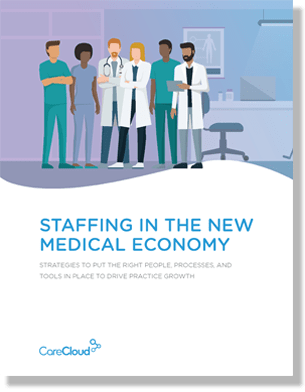WHAT IS INTEROPERABILITY AND ITS BENEFITS?
Interoperability in healthcare refers to the capacity of different healthcare information technology (HIT) systems to share, understand, and utilize data together. Many software programs existing in the industry are built separately, creating a situation where communication can be confused when they are paired. Integrations function somewhat, yet interoperability unites all aspects of a patient’s information despite different technologies employed by practices, hospitals, pharmacies, etc.
WHY IS INTEROPERABILITY IMPORTANT?
In healthcare, interoperability is crucial because people get care from many different clinicians who work in various healthcare systems and might be on multiple-payer panels. The significance of uninterrupted patient data flow is vital.
Many patients could capture certain physical traits (such as temperature, blood pressure, weight, and breathing speed) and send that health data wirelessly to their medical records. Doctors could then look into this information on a computer or mobile device because of interoperable medical devices, which allowed them access and supervision from anywhere.
LEVELS OF HIT INTEROPERABILITY
In the field of healthcare, not every level has the exact nature. Interoperability in healthcare is divided into four levels: fundamental, structural, and semantic. Also, there exists a background layer known as “interoperability governance” and an element that cuts across all these three levels called “integrated public service governance.”
-
FUNDAMENTAL INTEROPERABILITY
At its core, it concerns the fundamental capacity of one information system to swap data with another. The main aspect of foundational interoperability is that the receiving system doesn’t need to understand what it gets.
-
STRUCTURAL INTEROPERABILITY
The medium complexity type of structural interoperability describes how the information’s data structure gets transferred. This means that the shared message format between systems is standard so that data can be understood at each level. HIMSS explains structural data as “preserved and unaltered.”
-
SEMANTIC INTEROPERABILITY
The third level, semantic interoperability, is the most intricate and desired method for exchanging healthcare data. It permits multiple systems to exchange and utilize information in the best way possible. This includes sharing, understanding, and using data from different systems.
-
ORGANIZATIONAL INTEROPERABILITY
Organizational interoperability allows for secure data exchange free from friction and is done at the right time between organizations, entities, and people.
BENEFITS OF INTEROPERABILITY
Information sharing is crucial for progress. Interoperability deals with this requirement while enhancing the quality of care provided, boosting efficiency in healthcare, and offering financial motivation.
-
PROMOTES PATIENT EDUCATION
Healthcare interoperability can promote patient engagement and patient education as well. Think of the primary care doctor who could give newly diagnosed diabetes patients training resources through the patient portal. This activity would require more effort and time if there were no interoperability between the educational system and electronic health records.
-
BOOSTS PRODUCTIVITY, REDUCES COSTS AND ENRICHES THE PATIENT EXPERIENCE
Healthcare interoperability could help increase productivity, lower expenses, and lessen errors by making it easier to share crucial health information among medical practices, payers, laboratories, suppliers, and public health registries. It greatly enhances the lives of those in healthcare careers or professions, resulting in a superior patient experience.
-
REDUCED PHYSICIAN BURNOUT
More regulatory compliance needs, and too many software solutions have all added to more work for doctors and administrators. Having less paperwork for employees and not needing to enter data manually are significant advantages of healthcare interoperability.
-
QUALITY OF CARE
The Continuum of Care is the complete medical history for most patients, gathered from clinics, independent practices, and hospitals. This includes all individual interactions such as past symptoms, procedures done on them, allergies they have had, or complications experienced. Not having all those data points because of the absence of integrated healthcare IT systems is dangerous at most and very troublesome for the patient. Having complete visibility and access to all patient data, both for the healthcare institution and the patient, is the main advantage of interoperability.
-
EFFICIENCY
The ability to see outcomes immediately indicates that medical practices can minimize repetitive jobs and greatly enhance margins by serving more patients and boosting the standard of care they get. People receiving treatment will have greater power over their information, lessening this administrative load. The rest of the administrative and clinical functions will be more efficient because of accurate data and understanding.
-
FINANCIAL INCENTIVES & REIMBURSEMENTS
The start of Meaningful Use, which rewards practices using EHR electronic health records, set the stage for interoperability between systems and its link with money-based incentives. This will be an essential part of upcoming advances in value-based care, strengthening the connection between patient results and financial results.
Conclusion
Healthcare interoperability is a crucial part of today’s medical practice, making it possible for patient data to move smoothly between different healthcare information technology systems and be used effectively. By improving data sharing, interoperability helps provide better care, cut expenses, and enhance patient results. It speeds up the decision-making process by health providers. It lessens administrative loadings and mistakes in the healthcare delivery system, enabling people to manage their health information easily while improving overall quality control within this sector.


